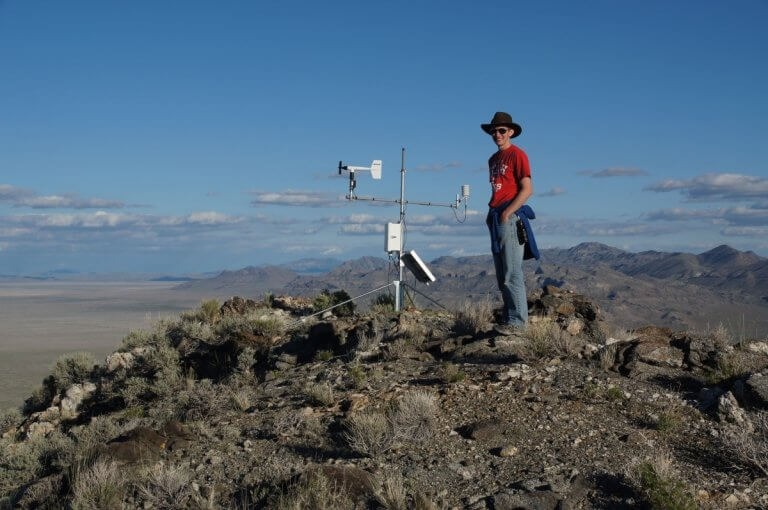
It’s no secret that the beauty of our natural environment is diminishing. Our planet’s natural resources are under great threat.
To provide real-world solutions to these pressing issues through the talents of both current and future generations, the College of Mines and Earth Sciences (CMES) at the University of Utah is facing these matters head-on, helping to support the university-wide Global Change & Sustainability Center.
Recognised as a place where transformative ideas are born, the facilitates interactions among scientists, creative researchers, engineers and policymakers who are keen to understand the complex challenges and dynamics within natural and human-built ecosystems.
What is the GCSC?
This center at the University of Utah is an interdisciplinary hub, catalyzing research on global change and sustainability. This is achieved through a variety of strategic actions, including creating opportunities for researchers to engage with one another, supporting faculty and student research efforts, training, professional development and more.
The GCSC-affiliated faculty have noted research strengths in water, air, climate, ecological dynamics, environmental change, humans and their environment, energy, food systems and environmental policy and law.

Source: University of Utah, CMES
The ten affiliated colleges represent more than 140 faculties interested in a broad spectrum of research in air quality, built environment & communities, climate change, ecological & environmental change, energy, food systems, justice, equity & diversity, nature & culture and water. This number includes 36 faculty affiliates from the College of Mines and Earth Sciences in Atmospheric Sciences, Geology and Geophysics and Metallurgical Engineering.
CMES in Action
One example of how the College of Mines and Earth Sciences at Utah takes proactive measures to maintain the natural environment is through their ‘Atmospheric Chemistry and Air Pollution’ course.
Conducted by Professor John Lin from the Department of Atmospheric Sciences, this course integrates field-based experience so the air quality data collected is more meaningful for students.
Before having students work with trace gas and air quality data collected on the TRAX light rail by the Land-Atmosphere Interactions Research (LAIR) research group in collaboration with the MesoWest group, Lin gave a unique assignment: students were to ride the red line TRAX from Utah’s campus all the way to the end of the line in South Jordan, Utah, taking notes along the way.

Source: University of Utah, CMES
“I wanted the students to have a real appreciation for the physical environment they’re living in and to relate the pollution TRAX is monitoring to human activity,” said Lin.
Next, Lin collated students’ field notes from their TRAX rides and assigned initial experiments with this new dataset. Students then started working with the research-grade data from instruments mounted on the trains to better understand spatial distribution and long-term trends for air pollution in the Salt Lake Valley.
The course culminated in a final project where students used this data to answer their air-quality related questions, exploring concepts like how pollution varies throughout the Salt Lake Valley, how the weather is similar to changes in pollution and how various pollutants change through the seasons.
Lin was inspired to pair a ride on TRAX with his data during the Wasatch Experience – a year-long workshop at the university that supports faculty in incorporating concepts of sustainability into their courses. He hoped to help students who were already passionate about the local environment to foster a stronger connection to it through scientific data.
Lin found the experience to be rewarding for himself and the students. As he explains, “It was very fulfilling to see the students relate the research-grade data we are collecting to our local environment and address questions that they found of personal interest. Hopefully, it made them think about what is in the air as they travel through the Salt Lake area.”

Source: University of Utah, CMES
Your future at the University of Utah
With its innovative enthralling hands-on projects with talented professors and a college dedicated to producing real-world solutions, your future is bright at the University of Utah.
By digging deeper and investigating further into the viability of natural, social and economic systems while working towards a world where humans and ecosystems thrive, the research and training you’ll complete at CMES will be a valuable, extraordinary experience.
Located in an energy- and mineral-rich geographical area, this is a strategic position if you yearn to master the mining and sustainability sector.
By establishing its first School of Mines in 1901, boasting a rich history in metallurgy and mining instruction, the College of Mines and Earth Sciences has always been at the forefront of sustainable development and innovation.
So, if you’d like to get involved with the informative courses and revolutionary research-led projects at the University of Utah and the established College of Mines and Earth Sciences, click here to unearth your potential.
Follow the CMES on Facebook, Twitter and Instagram
Liked this? Then you’ll love…
Resilient research hubs that strive for global sustainability
Help change the world with the CMES at the University of Utah







